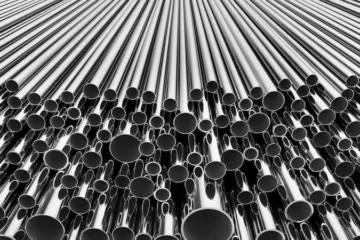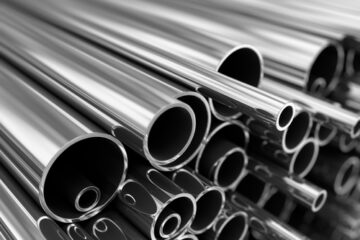How Stainless Steel is Made – From Raw Material to Final Form
Stainless steel is one of the most versatile and widely used materials in modern manufacturing, construction, and everyday products. But have you ever wondered how stainless steel is made? From raw materials to finished sheets, rods, and components, the production process is both fascinating and highly technical.
In this blog, we’ll walk you through each stage of stainless steel production, so you understand how raw metals are transformed into the durable, corrosion-resistant steel we rely on every day.
1. Sourcing the Raw Materials
Stainless steel is an alloy made primarily from:
- Iron (Fe): The base metal of steel
- Chromium (Cr): Typically 10.5% or more — gives stainless steel its corrosion resistance
- Nickel (Ni): Adds toughness and enhances corrosion resistance
- Carbon (C), Manganese (Mn), Molybdenum (Mo), and others depending on the grade
These elements are sourced from natural ores and recycled scrap metals, making stainless steel a highly recyclable and sustainable material.
2. Melting and Mixing
The raw materials are fed into a high-temperature electric arc furnace (EAF). The furnace melts the mixture at temperatures over 1,400°C (2,550°F), producing a liquid molten alloy. This molten mixture is stirred and refined to ensure chemical uniformity.
De-Carbonization:
Carbon content is controlled using techniques like Argon Oxygen Decarburization (AOD) or Vacuum Oxygen Decarburization (VOD), which ensure the correct composition for various stainless steel grades.
3. Forming Into Shapes
Once the correct chemical balance is achieved, the molten stainless steel is cast into basic shapes, such as:
- Blooms: Large square sections
- Billets: Smaller rectangular or round bars
- Slabs: Wide flat pieces used for rolling into sheets
4. Hot Rolling
The solidified shapes are reheated and passed through a series of rolling mills at high temperatures. This reduces the thickness and gives the material its initial shape, whether that’s a sheet, plate, coil, or rod.
Hot rolling also improves ductility and workability, making the steel easier to process in later stages.
5. Heat Treatment (Annealing)
After rolling, the steel is usually annealed — heated and slowly cooled — to relieve internal stresses and improve grain structure. This process enhances mechanical properties and allows for better shaping in later stages.
6. Descaling and Pickling
During hot rolling and heat treatment, a surface layer of scale (oxidation) forms. To remove this, the steel undergoes pickling — immersion in acid solutions to clean the surface and prepare it for finishing.
7. Cold Rolling and Finishing
For applications requiring high precision and smooth surface finish, the steel is cold rolled — passed through rollers at room temperature to reduce thickness and increase strength.
The surface is then treated based on application needs, including:
- Brushed Finish: Matte look, often used in architecture
- Mirror Finish: Highly polished, used in decorative applications
- Matte or Satin Finish: For industrial uses
8. Cutting and Forming
Once finished, the stainless steel is cut into required lengths, shapes, or coils using shearing, sawing, or laser cutting methods. It may also be bent, punched, or welded to create final products.
9. Quality Control and Testing
Every batch of stainless steel undergoes strict quality tests to ensure:
- Correct chemical composition
- Mechanical strength
- Surface quality
- Corrosion resistance
Only after passing these standards is the stainless steel shipped out to manufacturers, builders, and industries worldwide.
10. Sustainability: The Circular Life of Stainless Steel
One of the biggest benefits of stainless steel is that it is 100% recyclable. Over 60% of stainless steel produced today is made from recycled material, making it one of the most environmentally friendly materials available.
Conclusion
The production of stainless steel is a complex, multi-step process that transforms raw materials into one of the world’s strongest and most reliable metals. From skyscrapers and bridges to surgical tools and kitchen appliances, stainless steel plays a crucial role in our lives.
At Real Time Metal, we are proud to supply high-quality stainless steel tailored to your needs. With deep expertise and a focus on innovation, we ensure that every product meets global standards of strength, precision, and sustainability.
For top-grade stainless steel solutions, trust Real Time Metal — Where Innovation Meets Metal Excellence.


0 Comments